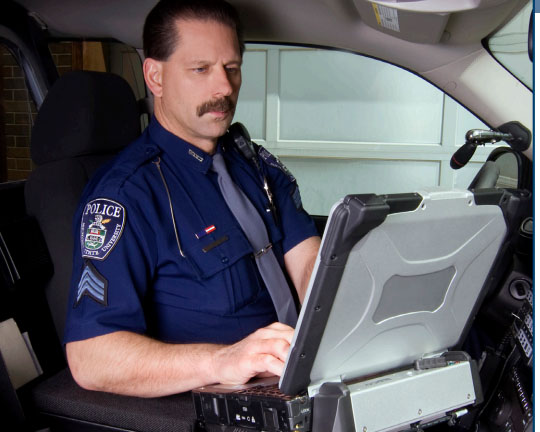Studies on ergonomic injuries in police departments report they occur most frequently to the back, hands and fingers, the knees, and the legs (Mayhew, 2001). Back pain is the most significant ergonomic risk requiring attention. Siting and standing for long periods of time, in a car, at a desk, or standing at a function all put stressors on the lumbar and cervical spine, head and shoulders. Sudden movements when restraining offenders and sitting in uncomfortable positions for long periods, also contribute to ergonomic injuries.
legs (Mayhew, 2001). Back pain is the most significant ergonomic risk requiring attention. Siting and standing for long periods of time, in a car, at a desk, or standing at a function all put stressors on the lumbar and cervical spine, head and shoulders. Sudden movements when restraining offenders and sitting in uncomfortable positions for long periods, also contribute to ergonomic injuries.
At the individual level, police officers can take steps to improve ergonomics and reduce risk of injury by doing a few mindful practices each day:
- Come to work prepared: know how to do the job with the proper body dynamics.
- Stretch slowly: 3 to 5 seconds of light stretching every hour can help reduce injury
- Good Posture: Keeping your head over your shoulders and chin up. Sit up straight and keep your legs uncrossed, feet on the floor.
- Get a good night’s sleep.
- Eat healthy, small meals and snacks
- Drink plenty of water/fluids
- Use personal protective equipment such as back brace, wrist straps, and gloves
At an organizational level, departments can promote physical fitness programs with the purpose of improving muscular performance that may have a beneficial impact on back and knee injuries. Improving physical fitness may also have a positive effect on reducing stress and musculoskeletal disorders like carpal tunnel syndrome and shoulder rotation and even cardiovascular risks. Allow officers time to work away from the patrol vehicle and desk to stretch and move around.
Physical ergonomic risks also include noise and temperature extremes. For example, US regulations state that workers should not be exposed to more than 90 decibels in an 8-hour day to protect their hearing. Even though a police car siren can reach maximum levels of 110 decibels, the everyday time-weighted exposure rarely exceeds 85 decibels. Extreme body temperatures experienced by police officers may negatively impact physical abilities. Cold weather can restrict blood circulation and tightens muscles, while hot weather can cause muscle cramping and soreness. Long hours of driving also resulted in a higher prevalence and severity of hand and wrist pain, for many police officers.
A solution for combating ergonomic stressors is to carry out a comprehensive ergonomic study with the object of redesigning the patrol car (ergonomically designed seats, dashboard, and equipment installation), improving office workspace and addressing police belts. Police belts contain vital equipment but creates added weight that effects an officer’s body, leading to potential musculoskeletal damage, and the negative impact it has on their ability to run, change direction, carry a victim, or deal with a noncompliant offender. Some hazards, when put together, create additional injury potential. In a recent study that evaluated the effects of duty belt and driver seat design on posture and discomfort, officers reported a high prevalence of problems in the lower back from prolonged driving.
A workspace redesign should look at aesthetics, internal space enclosures, accessibility, adaptability, management of air quality and temperature, control of noise, suitability and maintainability of materials. Consider vehicle seating, computer locations, lightweight belt configuration, lighting improvements and noise reduction when evaluating officer workspaces. Administrative improvements could be considered for shift development, health and wellness programs, less frequent shift rotations, and mental health awareness programs.
Reach out to a doctor (orthopedists and chiropractors are well educated in ergonomic distress disorders) when you first begin to experience pain. Waiting to evaluate pain can increase the severity of an injury and ultimately lead to harmful outcomes. A doctor can also give you suggestions on improving your work dynamics to prevent future injury. Officers should work with their police department administrators on implementing these improvements.
When police officers are safe and healthy, the community will be safer and better protected. The Comp Alliance is proud to provide these week-long safety tips during National Police Week, and provide safety programs for our member police departments. Contact the Director of Risk Management, Robert Blaisdell at This email address is being protected from spambots. You need JavaScript enabled to view it., for additional assistance on police officer safety.

